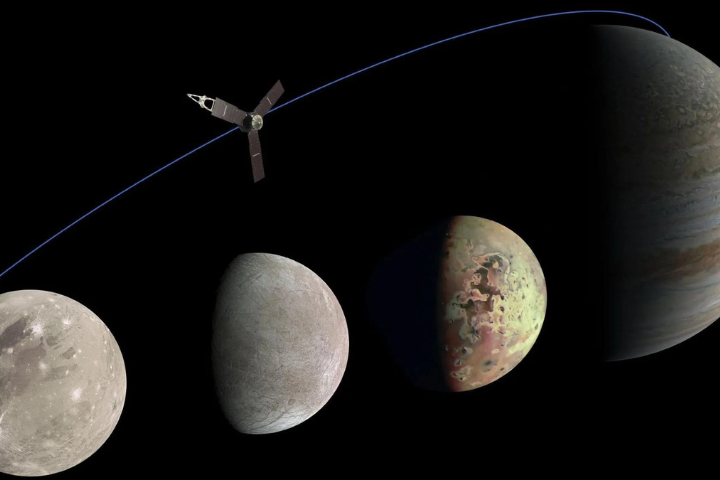Scientists across various disciplines in the scientific community have expressed a growing consensus regarding the potential presence of liquid oceans and suitable conditions for life in an area of our solar system that remains largely uncharted.
The intriguing possibility has sparked increased interest among planetary scientists, leading to a mounting chorus of voices advocating for a dedicated exploration mission to Uranus and its enigmatic moons, underscoring the urgency and significance of further investigating these celestial bodies.
Jupiter’s and Saturn’s moons have been on the radar
So yet, only the moons of Jupiter and Saturn have been observed in this region; it is likely that they have liquid water seas beneath them.
In this context, two moons of interest have been the Jupiterian Europa and the Saturnian Enceladus. They are not in the “Goldilocks zone,” which is the furthest point from a star at which a planet’s surface can support liquid water.
On the other hand, given the hypothesis that life can most likely arise inside the water bodies when heated through various means, they are regarded as prime candidates to be examined for habitable circumstances.
In this scenario, a number of scientists are now also interested in Uranus. Scientists point to telltale clues that lead to the possibility of liquid seas and potentially habitable chemical compositions within a number of Uranus moons.
In a recent publication, planetary scientists discussed Uranus and its moons. It is suggested that spacecraft be sent to these moons in order to search for clues about how these worlds developed and evolved as well as indicators of habitability.
Julie Castillo-Rogez, a planetary scientist at NASA’s Jet Propulsion Laboratory said “The most exciting prospect at the (Uranian) moons is that they could still host subsurface oceans at present. It is a low probability for some of them, so if the mission does find oceans in all/most of them, then it will help better understand what mechanisms help keep the interiors of these moons warm,”
The team studied five of Uranus’ largest moons
A group headed by Castillo-Rogez reanalyzed the data that NASA’s Voyager 2 probe obtained during its 1986 flyby of the Uranian system in 2022. The group examined Ariel, Umbriel, Titania, Oberon, and Miranda, the five biggest moons of Uranus.
Ariel, Umbriel, Titania, and Oberon may have liquid oceans inside of them between their frozen crust and cores, according to research done on these moons’ densities and their respective radii.
Castillo-Rogez told Space.com that he thinks the primary source of heat for these moons “comes from the decay of radioactive elements, specifically potassium, uranium, and thorium” because the Uranus system is so far from the sun.
Furthermore, there is proof that 100 million to one billion years ago, Miranda and Ariel saw geologic activity such as tectonics and ice volcanoes.
Experts claim that a voyage to Uranus can explore the internal heating conditions on the moons, as they play a huge influence in the functioning of life.
It can also learn about salinity, as life would not be able to exist in liquid oceans if they are very salty. Since any life here would live inside to escape radiation and be near water, life forms would also require a consistent source of chemical energy.





GIPHY App Key not set. Please check settings